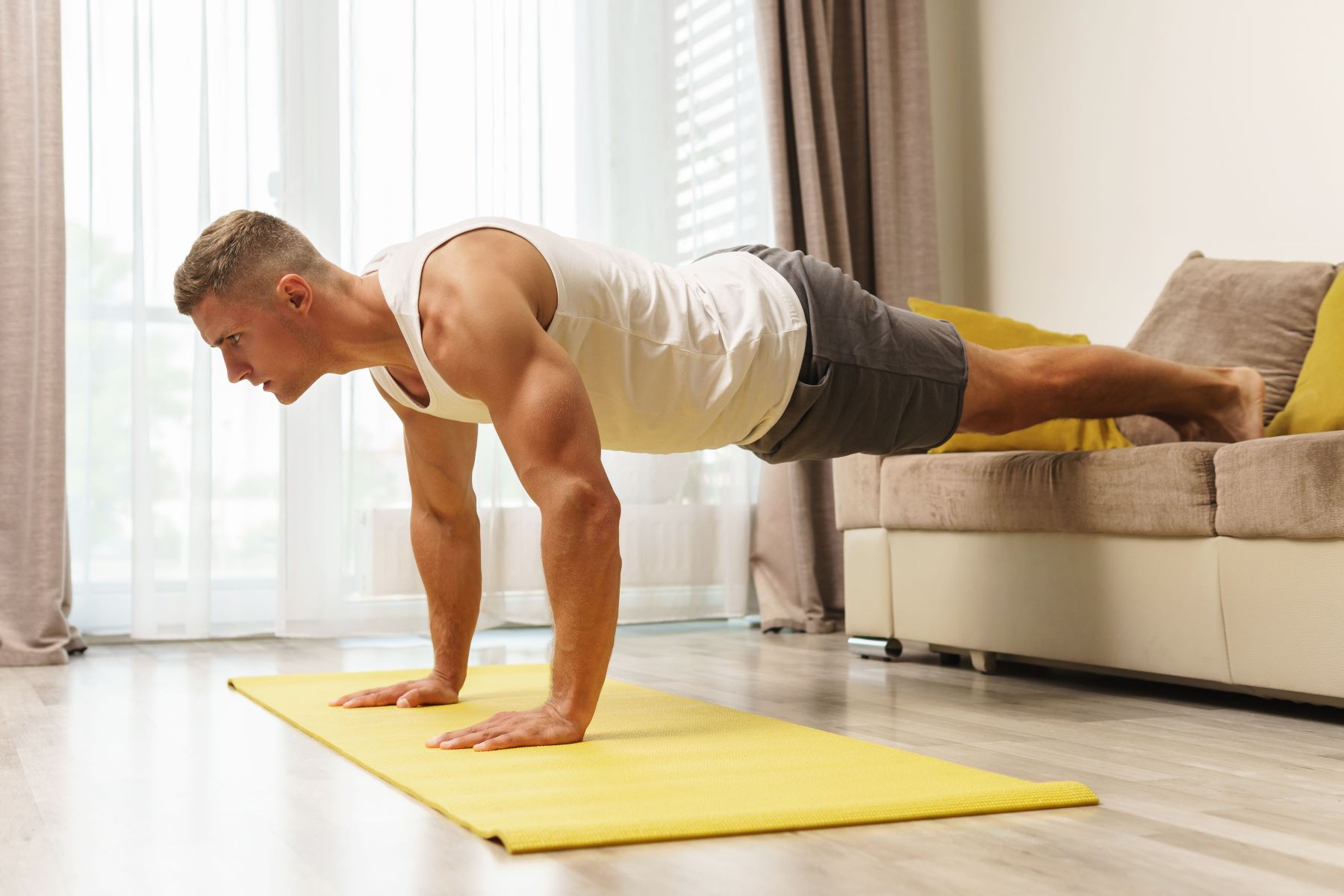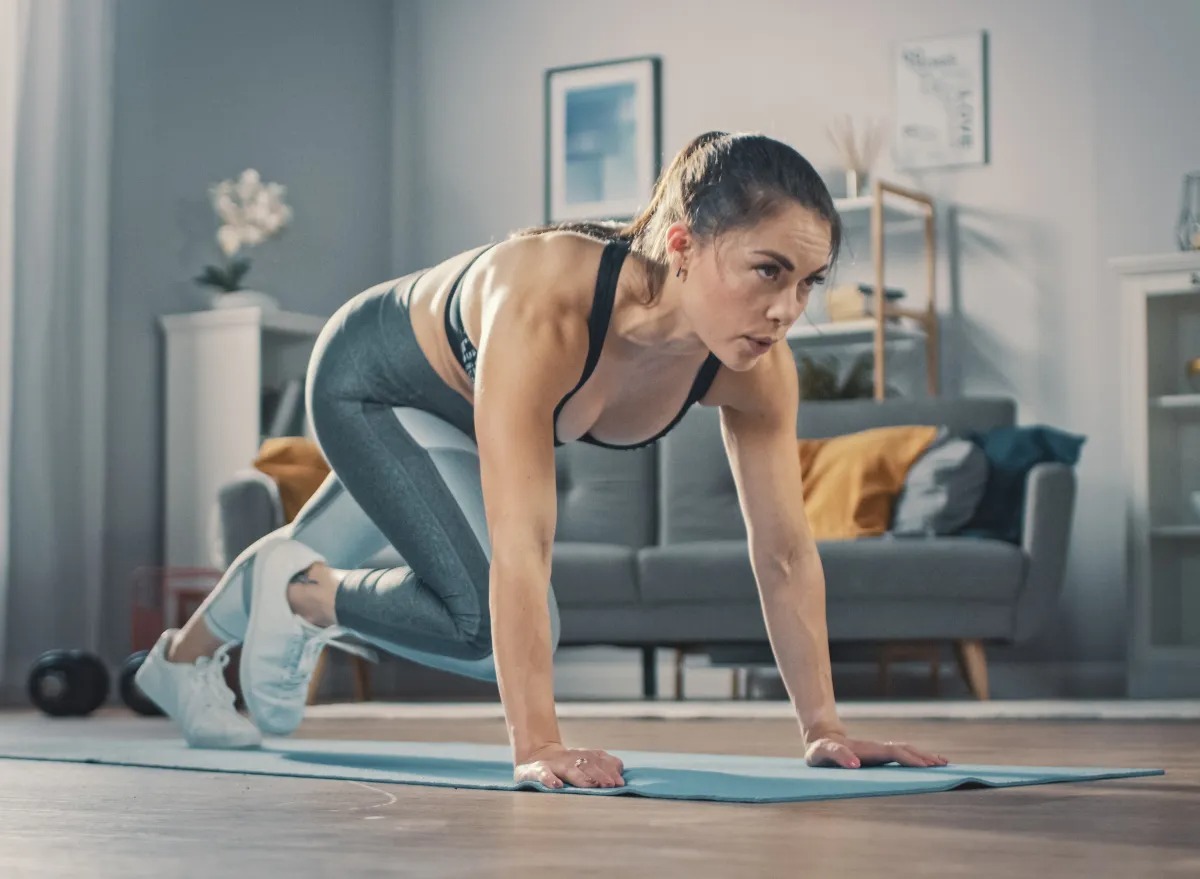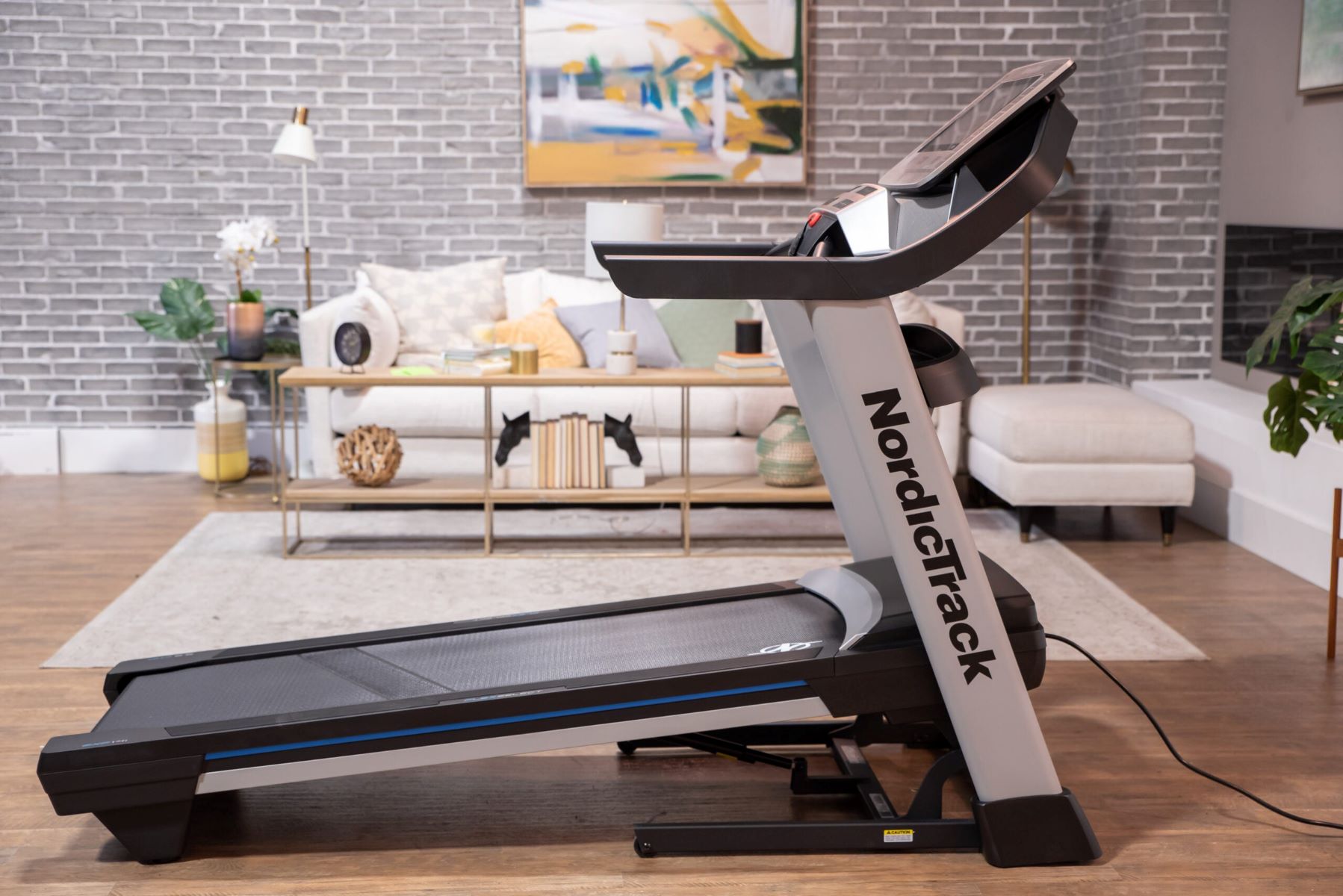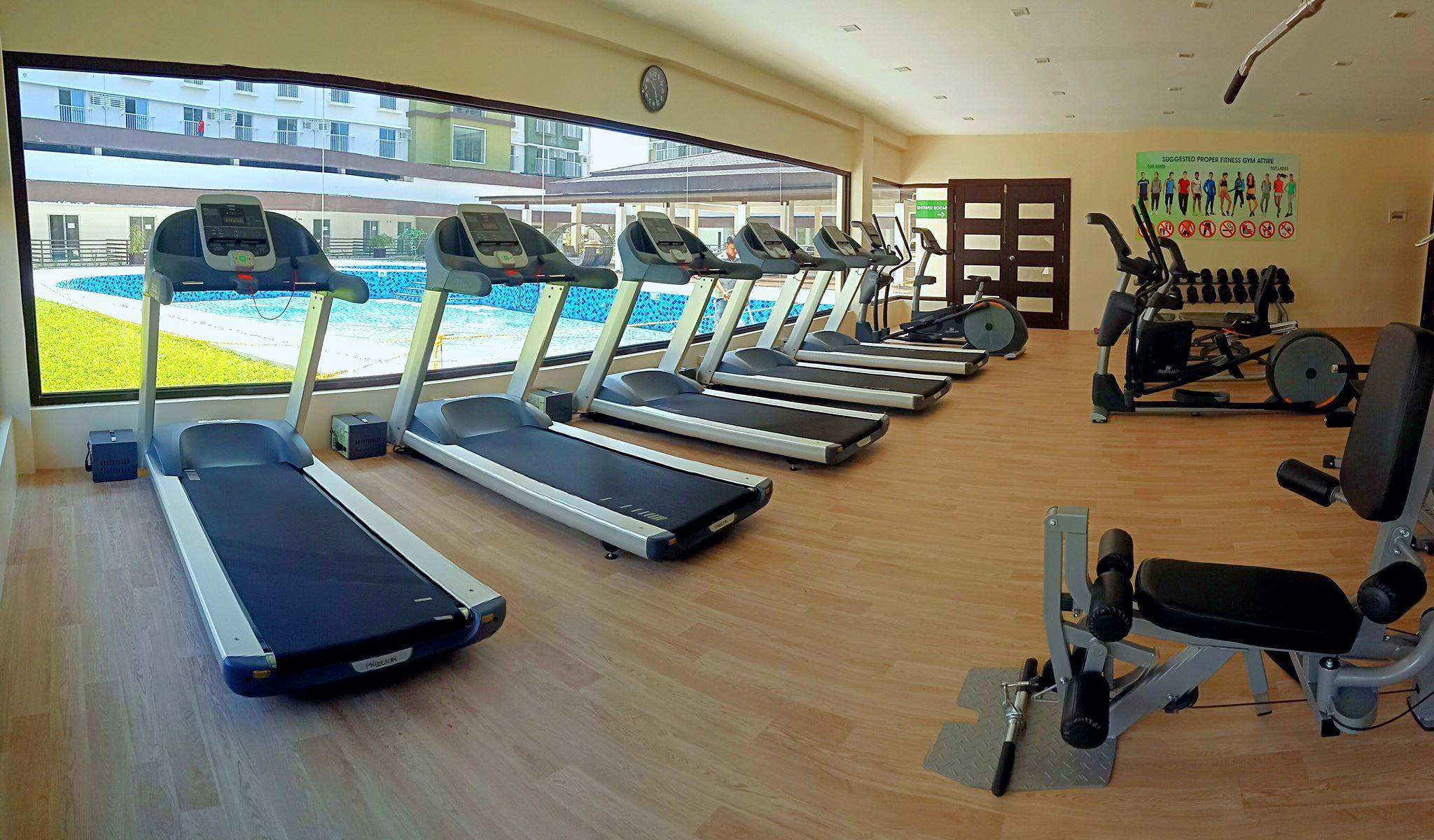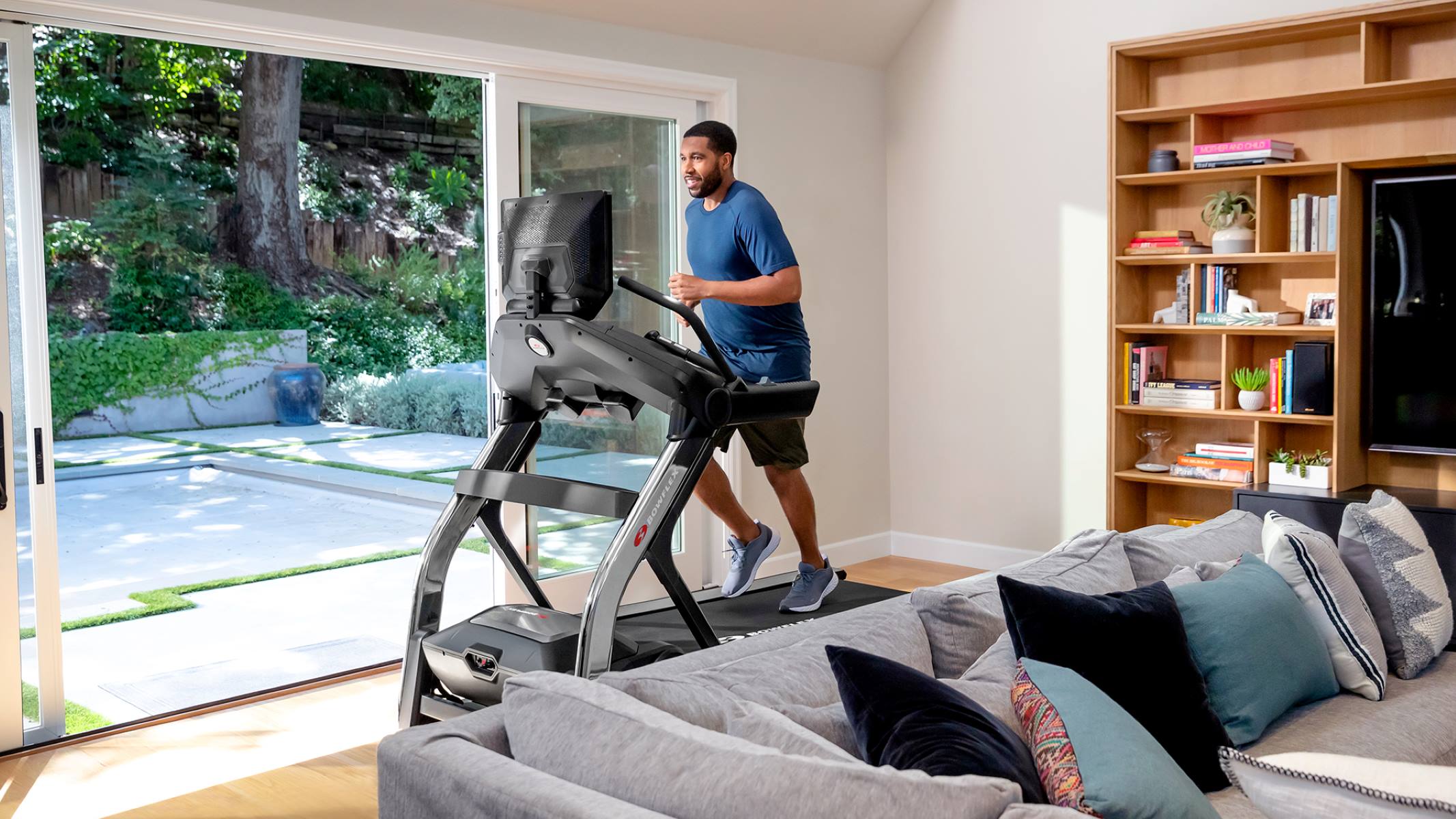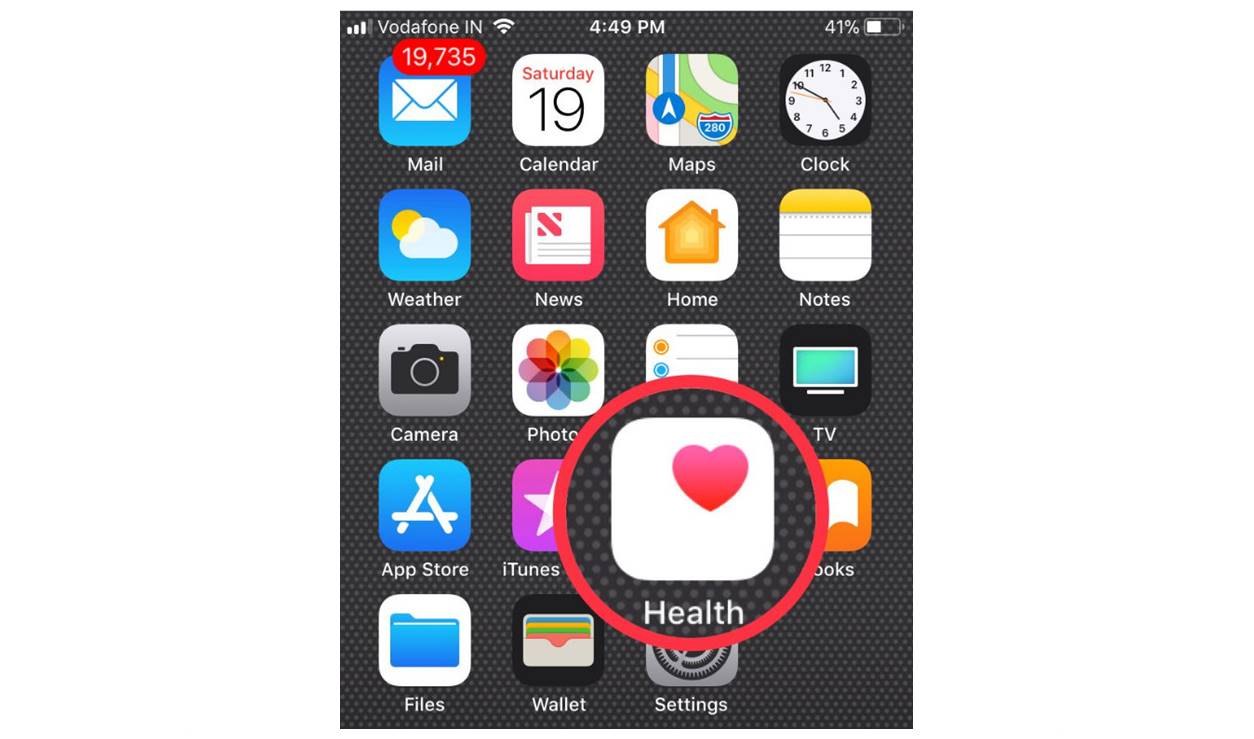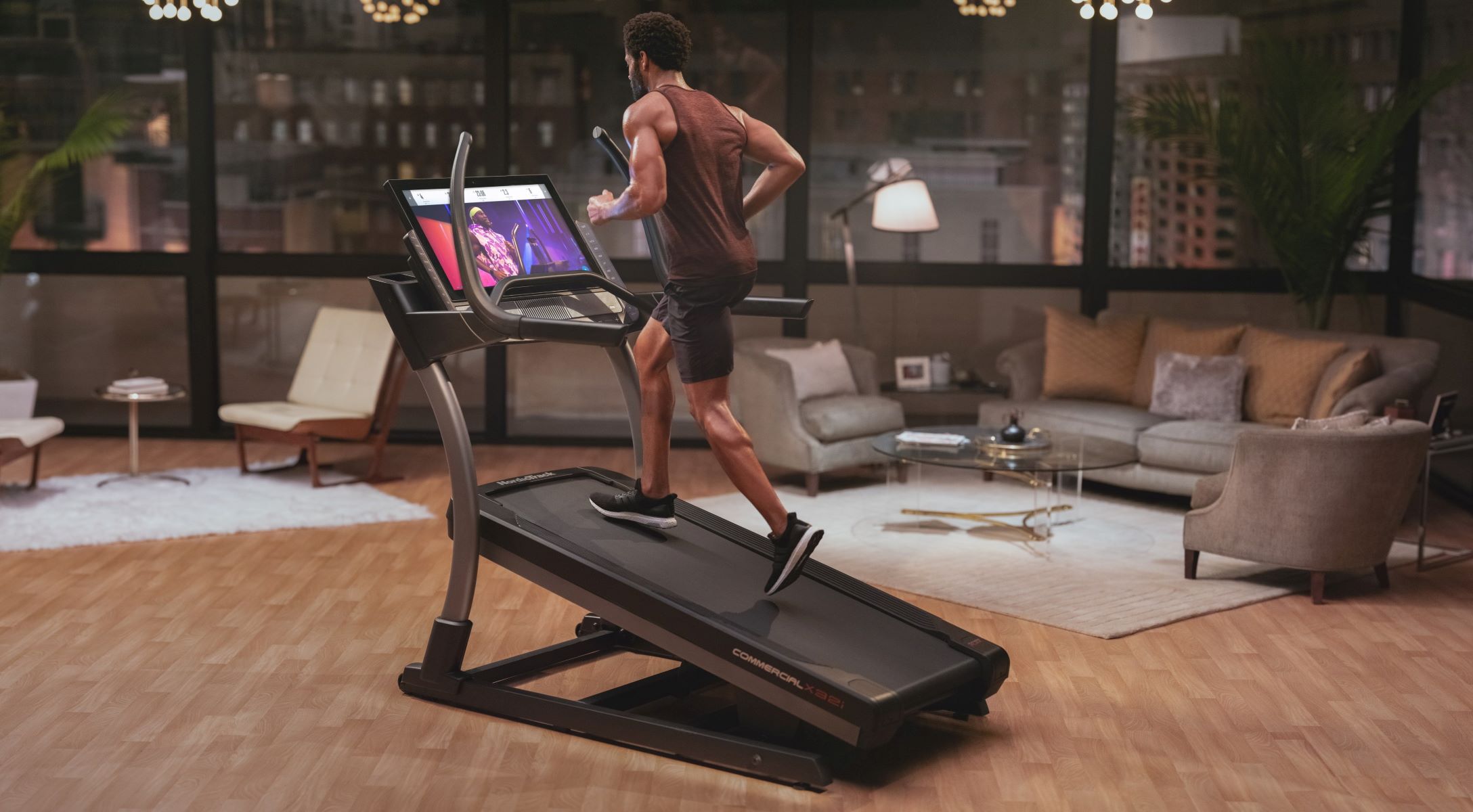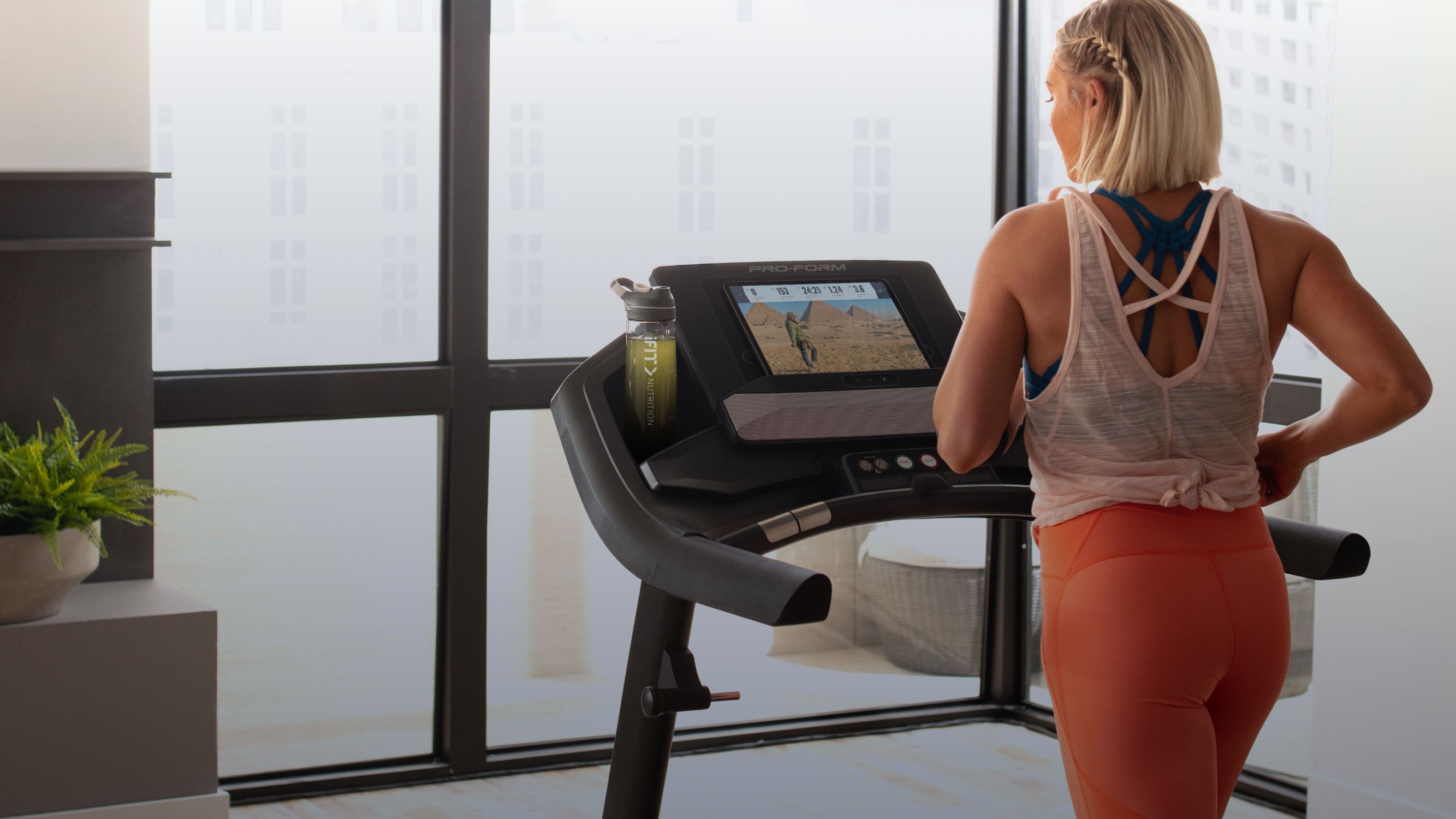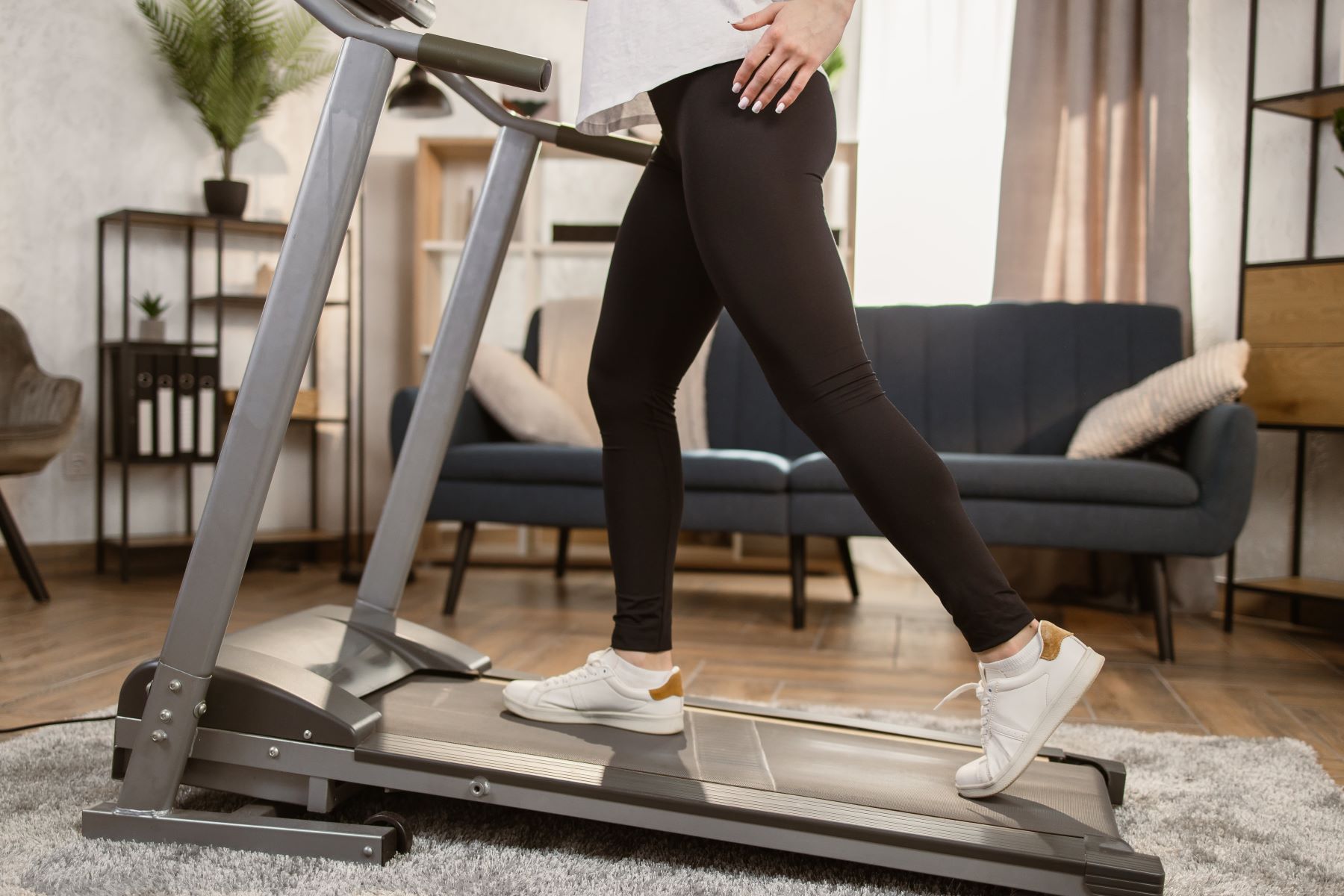

Featured
How To Workout From Home
Modified: August 21, 2023
Discover the ultimate guide on how to stay fit and active from the comfort of your own home with our featured workouts. Achieve your fitness goals without stepping foot outside!
Introduction
Welcome to the world of working out from home! With the convenience and flexibility it offers, at-home workouts are becoming increasingly popular. Whether you’re a busy professional, a stay-at-home parent, or simply prefer the comfort and privacy of exercising in your own space, working out from home can be a game-changer for your fitness journey.
Working out from home eliminates the need for travel time to and from the gym, expensive membership fees, and the potential distractions that can come with exercising in a crowded public space. Instead, you have the freedom to customize your workouts to fit your schedule and preferences.
Not only does working out from home save you time and money, it also allows you to create a personalized fitness environment that suits your needs. You can choose the music you prefer, wear whatever makes you comfortable, and even incorporate your own exercise equipment if you have any. Plus, you have the added benefit of exercising in a space where you feel safe and secure.
Whether you’re a beginner or a seasoned fitness enthusiast, working out from home offers a wide range of benefits. It allows you to take control of your fitness journey, prioritize your health, and focus on achieving your goals.
In this article, we will explore the various benefits of working out from home, provide guidance on setting up your home workout space, discuss essential equipment for home workouts, suggest different types of workouts you can do at home, advise on creating a workout routine, offer warm-up and cool-down exercises, provide tips for staying motivated, caution against common mistakes, discuss safety precautions, and offer guidance on tracking your progress and setting goals.
So, let’s dive in and discover the endless possibilities of working out from the comfort of your own home!
Benefits of Working Out from Home
Working out from home provides numerous benefits that can significantly enhance your fitness journey. Here are some of the key advantages:
- Convenience: One of the biggest advantages of home workouts is the convenience they offer. You have the freedom to exercise whenever it fits into your schedule, whether it’s early in the morning, during your lunch break, or in the evening. You don’t have to worry about commuting to the gym or fitting your workout into a specific time slot.
- Flexibility: Working out from home allows you to be flexible with the types of exercises you do. You can design your own workout routine by choosing activities that align with your goals and preferences. Whether you prefer cardio, strength training, yoga, or a combination of different exercises, the choice is yours.
- Privacy: Exercising in the comfort of your own home offers a high level of privacy. You don’t have to worry about feeling self-conscious or judged by others. This creates a comfortable environment where you can focus on your workout without any distractions.
- Cost-effective: Gym memberships and fitness classes can be expensive. By working out from home, you can save money in the long run. You don’t have to pay for monthly gym fees or class fees, and you can use the money you save to invest in your own exercise equipment if desired.
- Time-saving: Time is a precious commodity, and working out from home can help you save valuable time. Without the need to travel to and from the gym, you can maximize the time spent on your actual workout. The saved time can be used for other activities or commitments.
- Comfort and customization: When you work out from home, you have complete control over your workout environment. You can choose the temperature, play your favorite music, and create a space that promotes relaxation and focus. Additionally, you have the freedom to wear whatever makes you comfortable during your workout.
- No equipment limitations: While public gyms offer a wide array of exercise equipment, working out from home allows you to adapt to your own equipment preferences. Whether you prefer using resistance bands, dumbbells, or simply your body weight, you can personalize your workouts to align with the equipment you have available.
By taking advantage of the benefits of working out from home, you can create a fitness routine that perfectly suits your lifestyle and goals. So, let’s explore how you can set up your home workout space to optimize your fitness journey.
Setting Up Your Home Workout Space
Creating a dedicated workout space in your home is essential for maximizing the effectiveness and enjoyment of your at-home workouts. Here are some tips to help you set up your home workout space:
- Select an appropriate area: Choose a space in your home that can accommodate your workout routine. It can be a spare room, a corner of your living room, or even your backyard if weather permits. Make sure the area is well-ventilated and has enough space for you to move around comfortably.
- Clear the clutter: Before setting up your workout space, declutter the area and remove any unnecessary items. This will create a clean and inviting environment that allows you to focus on your exercises and minimizes distractions.
- Consider the flooring: Depending on the type of exercises you’ll be doing, consider the flooring of your workout space. If you’ll be doing high-impact exercises, such as jumping or running, invest in shock-absorbing mats or rubber flooring to protect your joints and minimize noise.
- Provide proper lighting: Ensure that your workout space has adequate lighting, whether it’s natural light or artificial lighting. Good lighting will not only make your workouts safer but also help create a motivating and inviting atmosphere.
- Keep it organized: Organize your workout area by keeping your equipment, exercise mats, and accessories neatly arranged. This will make it easier for you to find what you need and maintain a clutter-free environment.
- Create a motivating atmosphere: Personalize your workout space to make it more enjoyable and motivating. Hang up motivational quotes or images, play energizing music, or incorporate plants to add a touch of nature. Make it a space that inspires and encourages you to push yourself.
- Consider privacy: If privacy is important to you, consider using curtains or room dividers to create a secluded space for your workouts. This can help you feel more comfortable and focused, especially if you live with other people.
- Make it technology-friendly: If you enjoy following workout videos or using fitness apps, ensure that your workout space has easy access to a screen and reliable Wi-Fi connectivity. This will allow you to make the most of online workout resources.
By following these tips and creating a dedicated workout space, you’ll be able to create an environment that fosters motivation, focus, and enjoyment during your at-home workouts. Now that you have your space set up, let’s explore the essential equipment you might need for your home workouts.
Essential Equipment for Home Workouts
When setting up your home workout space, having a few essential pieces of equipment can greatly enhance the variety and effectiveness of your workouts. While you can achieve a great workout with little to no equipment, here are some key items you may want to consider:
- Exercise mat: An exercise mat provides cushioning and support for floor exercises, making them more comfortable and protecting your joints. It also helps with stability during exercises like planks and push-ups.
- Dumbbells or resistance bands: Dumbbells and resistance bands are versatile and budget-friendly tools that can be used for strength training exercises. They allow you to add resistance and challenge your muscles in various ways, helping to build strength and tone your body.
- Kettlebell: A kettlebell is another versatile strength training tool that can add intensity to your workouts. It can be used for exercises such as swings, deadlifts, and squats, targeting multiple muscle groups simultaneously.
- Jump rope: Jumping rope is a fantastic cardiovascular exercise that improves agility, coordination, and endurance. It’s a cost-effective way to get your heart rate up and burn calories, and it can be done in small spaces.
- Yoga mat and blocks: If you enjoy practicing yoga or other floor-based exercises, investing in a high-quality yoga mat and blocks can help improve your comfort and stability during poses.
- Stability ball: The stability ball, also known as an exercise ball, can be used for a wide range of exercises that target your core muscles. It helps improve balance, stability, and posture while adding variety to your workouts.
- Resistance bands: Resistance bands are lightweight and portable, making them a great option for home workouts. They provide resistance during exercises, helping to strengthen and tone your muscles, and they can be easily stored and taken with you when traveling.
- Skipping rope: Similar to the jump rope, a skipping rope is a simple and inexpensive cardio tool that can effectively elevate your heart rate and improve your cardiovascular fitness.
- Exercise ball: An exercise ball, also known as a Swiss ball or stability ball, can be used for core strengthening exercises, balance training, and stretching. It adds an element of instability, engaging more muscles during exercises.
These are just a few examples of the essential equipment you can incorporate into your home workouts. The equipment you choose will depend on your personal preferences, fitness goals, and budget. Remember, however, that while these tools can enhance your workouts, they are not necessary for getting started. Bodyweight exercises can be just as effective in building strength and improving fitness.
Now that you have your home workout space set up and some equipment in place, let’s explore the different types of workouts you can do at home to keep your fitness routine varied and exciting.
Types of Workouts You Can Do at Home
Working out from home offers a wide range of options to keep your fitness routine dynamic and engaging. Regardless of your fitness level or preferences, here are some types of workouts you can do at home:
- Bodyweight exercises: Bodyweight exercises are a fantastic way to build strength and endurance without the need for equipment. They include exercises like push-ups, squats, lunges, planks, and burpees. You can create a full-body workout using just your bodyweight.
- Cardiovascular workouts: Cardio workouts are great for boosting your heart rate, improving endurance, and burning calories. You can do exercises like jumping jacks, high knees, mountain climbers, or dance workouts. You can also incorporate equipment like a jump rope or a mini trampoline.
- HIIT workouts: High-Intensity Interval Training (HIIT) involves short bursts of intense exercise followed by periods of rest or lower-intensity activity. It’s an effective way to burn calories and improve cardiovascular fitness. HIIT workouts can include exercises like burpees, squat jumps, push-ups, and mountain climbers.
- Strength training: Strength training helps build muscle, increase metabolism, and improve overall strength and tone. You can use dumbbells, resistance bands, or your bodyweight to perform exercises like squats, lunges, bicep curls, shoulder presses, and tricep dips.
- Pilates: Pilates focuses on strengthening and stabilizing your core muscles, improving flexibility and posture. It incorporates exercises that target your abs, back, hips, and glutes. A mat and some instructional videos are all you need to get started with Pilates at home.
- Yoga: Yoga combines physical movements, breath control, and meditation to improve flexibility, balance, and mental well-being. You can follow online yoga classes or use instructional videos to guide your practice at home. A yoga mat and blocks can enhance your comfort and support during yoga sessions.
- Dance workouts: Dancing is a fun and energetic way to get your heart rate up and burn calories. You can follow dance workout videos online or create your own dance routine to your favorite music. It’s a great way to let loose and enjoy your home workouts.
- Barre workouts: Barre workouts combine elements of ballet, Pilates, and strength training to sculpt and tone your muscles. You can use a chair or a countertop as a barre substitute and follow online barre classes to target your arms, legs, core, and glutes.
- Aerobic workouts: Aerobic workouts include activities that elevate your heart rate and improve cardiovascular fitness. You can do aerobic exercises like jogging or running on the spot, jumping jacks, or kickboxing routines. These workouts can be customized to your fitness level and preferences.
- Outdoor activities: If you have access to an outdoor space, take advantage of activities like cycling, brisk walking, running, or hiking. Enjoying the fresh air and nature can provide additional benefits for your physical and mental well-being.
These are just a few examples of the types of workouts you can do at home. The options are vast, and you can mix and match various exercises to create a routine that keeps you motivated and challenged. Experiment with different workouts to discover what you enjoy the most and what works best for your fitness goals.
Now that you have an idea of the types of workouts you can do at home, let’s move on to the next step: creating a workout routine that suits your schedule and goals.
Creating a Workout Routine
Establishing a consistent workout routine is essential for making progress toward your fitness goals. Here are some steps to help you create a well-rounded and effective workout routine:
- Assess your fitness goals: Identify your objectives, whether they are to lose weight, build muscle, improve flexibility, or increase endurance. Having clear goals will guide your workout routine and help you stay focused.
- Determine the frequency: Decide how often you want to work out. Aim for at least three to four days a week to achieve noticeable results. However, start gradually if you’re new to exercising to avoid burnout or injuries.
- Choose the duration: Determine the length of each workout session that fits into your schedule. It can range from 20 minutes to an hour, depending on your availability and fitness level.
- Include variety: Incorporate a mix of different workout types to keep your routine interesting and engage different muscle groups. Include cardiovascular exercises, strength training, flexibility work, and restorative activities like yoga or stretching.
- Target specific muscle groups: If you’re looking to target specific areas of your body, incorporate exercises that focus on those muscle groups. For example, if you want to strengthen your core, include exercises like planks and abdominal crunches.
- Consider rest days: Rest days are just as important as workout days. Allow your body time to recover and adapt to the stress of exercise. Rest days also help prevent overuse injuries and burnout. Aim for at least one or two rest days per week.
- Warm up and cool down: Always start your workouts with a dynamic warm-up to prepare your muscles and joints for exercise. Similarly, end your sessions with a cool-down period that includes stretching. This helps to prevent injuries and improve flexibility.
- Start with a structured program: If you’re new to working out or prefer a more structured approach, consider following a workout program designed by professionals. There are many resources available online, including apps, websites, and YouTube channels, that offer guided workout programs for various fitness levels and goals.
- Track your progress: Keep a record of your workouts to track your progress over time. Note the exercises, sets, reps, and weights used. This will help you monitor your improvements and make adjustments to your routine as needed.
- Stay flexible: Life can be unpredictable, so be flexible with your workout routine. If you miss a workout or need to adjust your schedule, don’t stress over it. Adaptability is key to maintaining a long-term fitness routine.
Remember, consistency is paramount when it comes to seeing results. Stick to your workout routine but also be open to adjusting it as you progress and evolve. Listen to your body and make modifications when necessary.
Now that you have a well-designed workout routine, it’s important to incorporate proper warm-up and cool-down exercises. Let’s explore some essential warm-up and cool-down activities to include in your workouts.
Warm-up and Cool-down Exercises
Both warm-up and cool-down exercises play crucial roles in preparing your body for a workout and aiding in its recovery. Here are some essential warm-up and cool-down exercises to incorporate into your workout routine:
Warm-up Exercises:
A proper warm-up gradually increases your heart rate, loosens your muscles, and prepares your body for the upcoming physical activity. Here are some important warm-up exercises to consider:
- Cardiovascular warm-up: Start with light aerobic exercises such as brisk walking, jogging on the spot, or jumping jacks. This helps increase your heart rate and blood flow.
- Joint mobilization: Perform gentle movements that target all your major joints, including neck rotations, shoulder rolls, arm circles, waist twists, and ankle rolls. This helps improve mobility and flexibility.
- Dynamic stretches: Incorporate dynamic stretching exercises such as leg swings, arm circles, torso twists, and walking lunges. Dynamic stretches involve controlled movements that mimic the activity you’ll be doing during your workout.
- Specific muscle activation: If you’re targeting specific muscle groups, perform exercises that activate and engage those muscles. For example, before a leg workout, do bodyweight squats or lunges to activate your lower body muscles.
- Practice sport-specific movements: If you’re participating in a specific sport or activity, incorporate warm-up exercises that simulate the movements involved. This helps prepare your body for the specific demands of the activity.
Cool-down Exercises:
A proper cool-down allows your body to gradually transition from exercise to a resting state. It helps reduce post-workout muscle soreness and stiffness and promotes recovery. Here are some essential cool-down exercises to include:
- Low-intensity cardio: After your main workout, perform low-intensity cardio exercises such as walking or light jogging to gradually lower your heart rate.
- Static stretches: Focus on static stretches that target the major muscle groups you worked during your workout. Hold each stretch for 15 to 30 seconds and breathe deeply to enhance relaxation and flexibility.
- Foam rolling or self-massage: Use a foam roller or massage tools to apply gentle pressure and release tension in your muscles. This can help alleviate tightness and promote muscle recovery.
- Breathing exercises: End your cool-down with deep breathing exercises or meditation to promote relaxation and reduce stress.
- Hydrate: Throughout your cool-down, remember to hydrate your body by drinking water to replenish the fluids lost during your workout.
Incorporating these warm-up and cool-down exercises into your fitness routine is essential for preventing injuries, enhancing performance, and improving recovery. They should not be skipped, as they play a vital role in overall exercise safety and effectiveness.
Now that you know how to properly warm up and cool down your body, let’s explore tips for staying motivated while working out from home.
Tips for Staying Motivated While Working Out from Home
Staying motivated is key to maintaining a consistent workout routine, especially when you’re exercising from the comfort of your own home. Here are some helpful tips to keep you motivated and engaged during your at-home workouts:
- Set clear goals: Define your fitness goals and keep them in mind as you work out. Whether it’s losing weight, gaining strength, or improving your overall fitness level, having specific goals will give you a sense of purpose and direction.
- Create a schedule: Set aside dedicated time for your workouts just as you would for any other important appointment. Having a set schedule helps establish a routine and makes it easier to stick with your workout plan.
- Mix up your workouts: Variety is the spice of life, and it also applies to your workouts. Keep things interesting by trying new exercises, incorporating different workout styles, or exploring online workout classes. This will prevent boredom and keep you engaged.
- Find an accountability partner: Team up with a family member, friend, or coworker who shares similar fitness goals. Check in with each other regularly, set workout challenges, or even exercise together through video calls. Having someone to hold you accountable can boost motivation and make workouts more enjoyable.
- Reward yourself: Treat yourself with non-food rewards when you reach certain milestones or achieve your fitness goals. It could be buying new workout gear, enjoying a relaxing spa day, or indulging in a guilt-free cheat meal.
- Create a motivating space: Designate a workout area that inspires and energizes you. Decorate it with motivational quotes, hang up pictures of your fitness role models, or play your favorite music during your workouts. A visually appealing and uplifting environment can help keep your motivation levels high.
- Track your progress: Keep a record of your workouts, measurements, and achievements. Seeing your progress over time can be incredibly motivating and serve as a reminder of how far you’ve come.
- Join online communities: Engage with fitness communities, social media groups, or forums that align with your fitness interests. Share your journey, seek support and advice, and be inspired by others’ stories. Surrounding yourself with like-minded individuals can provide a sense of camaraderie and motivation.
- Set mini-goals: Break down your larger fitness goals into smaller, achievable milestones. Celebrate each mini-goal along the way to keep your motivation high and experience a sense of accomplishment.
- Focus on how you feel: Pay attention to how exercise makes you feel, both during and after your workouts. Notice the increase in energy, improved mood, enhanced self-confidence, and the overall sense of well-being. This positive reinforcement can be a powerful motivator.
Remember, motivation may fluctuate at times, and that’s normal. It’s essential to find strategies that work best for you and adapt as needed to maintain your enthusiasm for your home workouts. Trust the process, stay committed, and keep your eyes on the prize.
Now that you have some effective motivation tips, let’s explore common mistakes to avoid to ensure a safe and successful at-home workout experience.
Common Mistakes to Avoid When Working Out from Home
Working out from home offers convenience and flexibility, but it’s important to be aware of common mistakes that can hinder your progress or lead to injury. Here are some mistakes to avoid when exercising at home:
- Skipping the warm-up and cool-down: Neglecting to warm up and cool down is a common mistake. Always start your workouts with a proper warm-up to prepare your muscles and joints for exercise, and end with a cool-down to gradually bring your heart rate down and aid in recovery.
- Lack of proper form and technique: Using incorrect form during exercises can lead to injury and ineffective workouts. Take the time to learn proper techniques for each exercise you perform, focusing on maintaining good posture and engaging the correct muscles.
- Overtraining or not taking rest days: Pushing yourself too hard without allowing time for recovery can lead to burnout and overuse injuries. It’s important to listen to your body and incorporate rest days into your routine. Rest days allow your muscles to repair and grow stronger.
- Not challenging yourself enough: On the other hand, sticking with the same exercises or not progressively increasing the intensity can hinder your progress. It’s important to challenge your body by gradually increasing the weights, repetitions, or difficulty of your exercises to continue to see results.
- Ignoring safety precautions: Safety should always be a priority during home workouts. Ensure that your workout area is free from hazards, use proper equipment when necessary, and follow safety guidelines for each exercise. It’s also important to check with your healthcare professional if you have any underlying health conditions or previous injuries.
- Pushing through pain: It’s normal to feel some muscle soreness during and after workouts, but sharp or intense pain should never be ignored. Pushing through pain can lead to further injury. If you experience pain, take a break, assess the situation, and modify or stop the exercise if needed.
- Lack of consistency: Consistency is key to seeing results. Skipping workouts or being inconsistent with your routine can slow down progress. Set realistic goals, create a schedule, and stick to it as much as possible. Even if you have limited time, a short workout is better than no workout at all.
- Not seeking guidance or instruction: If you’re new to working out or trying new exercises, it’s important to seek guidance. Incorrectly performing exercises can lead to injuries or prevent you from achieving your desired results. Consider working with a personal trainer or following reputable workout resources to ensure proper guidance.
- Becoming too focused on aesthetics: While it’s natural to want to see physical changes in your body, placing too much emphasis on aesthetics can lead to unrealistic expectations and frustration. Instead, focus on enjoying the journey, improving your fitness and overall well-being, and celebrating non-scale victories along the way.
Avoiding these common mistakes will help you create a safer, more effective, and enjoyable at-home workout experience. By being mindful of these pitfalls, you can maximize your results and minimize the risk of injury.
Now, let’s explore some safety precautions to keep in mind when working out from home to ensure your overall well-being.
Safety Precautions for Home Workouts
While working out from home offers convenience and flexibility, it’s important to prioritize safety to prevent injuries and ensure a successful fitness journey. Here are some essential safety precautions to keep in mind when exercising at home:
- Clear your space: Before starting your workout, ensure that your exercise area is clear of objects or obstacles that could potentially cause accidents. Remove any tripping hazards and create a safe environment for movement.
- Use proper equipment: If you’re using exercise equipment, ensure that it is in good working condition and used correctly. Follow the manufacturer’s instructions for setup and usage, and regularly inspect equipment for any signs of wear or damage.
- Wear appropriate attire: Choose comfortable and breathable clothing that allows for freedom of movement. Wear proper footwear that provides stability and support for your specific workout activities.
- Stay hydrated: Hydration is crucial for maintaining performance and preventing dehydration. Keep a water bottle nearby and drink fluids before, during, and after your workouts, especially if you’re engaging in vigorous or high-intensity exercises.
- Pay attention to your body: Listen to your body and be aware of any pain, discomfort, or unusual sensations during your workouts. If you experience sharp or persistent pain, dizziness, or shortness of breath, stop exercising and seek medical attention if necessary.
- Modify exercises as needed: If an exercise feels too challenging or causes pain, modify it to suit your current fitness level or seek alternatives that target the same muscle groups. Pushing yourself beyond your capabilities can lead to injuries.
- Warm up and cool down: Always begin your workouts with a proper warm-up and end with a cool-down. This helps prepare your body for exercise, reduces the risk of injury, and aids in the recovery process.
- Practice proper form: Focus on maintaining proper form and technique during exercises. Using correct form not only maximizes the effectiveness of the exercise but also prevents unnecessary strain on muscles and joints.
- Gradually increase intensity: Avoid sudden and drastic increases in workout intensity or duration. Gradually progress the intensity and duration of your workouts to give your body time to adapt and minimize the risk of overuse injuries.
- Seek professional guidance if needed: If you’re unsure about proper exercise techniques or have specific health concerns, consult with a qualified fitness professional or healthcare provider. They can provide guidance on suitable exercises and help create a customized workout plan.
Remember, safety should always be a priority when working out from home. By following these precautions, you can minimize the risk of injuries and ensure a safe and effective workout routine.
Now that you’re equipped with safety knowledge, let’s explore how you can track your progress and set goals to stay motivated and focused on your fitness journey.
Tracking Your Progress and Setting Goals
Tracking your progress and setting goals is crucial for staying motivated and ensuring continuous improvement in your fitness journey. Here are some effective strategies to help you track your progress and set meaningful goals:
- Keep a workout journal: Record your workouts, including exercises, sets, reps, and weights used. This allows you to track your progress and identify areas for improvement. You can also make note of how the workout felt, any challenges you faced, and your energy levels.
- Measurements and body composition: Take regular measurements of your body, such as weight, body fat percentage, and measurements of various body parts. This provides objective data on changes in your body composition as you progress in your fitness journey.
- Set specific and measurable goals: Goals should be clear, specific, and measurable, such as running a certain distance within a given time frame or increasing the number of push-ups you can do. Having well-defined goals helps you track your progress and stay focused.
- Break down your goals: Large goals can be overwhelming, so break them down into smaller, actionable steps. This allows you to celebrate milestones along the way and maintain motivation as you work towards your ultimate objective.
- Establish a timeline: Set realistic timelines for achieving your goals. Whether it’s weekly, monthly, or long-term goals, having a timeline helps create a sense of urgency and provides structure to your fitness journey.
- Celebrate non-scale victories: Don’t solely focus on the number on the scale. Pay attention to other forms of progress, such as improved fitness levels, increased flexibility, better sleep, or enhanced mental well-being. Celebrate these non-scale victories as they indicate positive changes in your overall health and well-being.
- Periodically reassess and adjust: Regularly evaluate your progress and adjust your goals if needed. As you achieve certain milestones, you may find that your goals need to be revised or that you’re ready for new challenges. Be flexible and adapt your goals to align with your evolving needs and capabilities.
- Stay accountable: Share your goals with a supportive friend, family member, or workout buddy. Having someone to hold you accountable and share in your achievements can boost motivation and make your fitness journey more enjoyable.
- Use fitness apps or wearables: Utilize fitness apps or wearable devices that track your activity, such as steps taken, calories burned, and heart rate. These tools provide real-time feedback and help you monitor your progress more accurately.
- Reward yourself: Set up a reward system for reaching certain milestones or accomplishing goals. Treat yourself to something you enjoy, like a massage, a new workout outfit, or a fun activity. Rewards can help reinforce positive behavior and keep you motivated.
Remember, progress is not always linear, and there may be setbacks along the way. Be patient and kind to yourself, and focus on the progress you’re making, no matter how small. Embrace the journey and enjoy the process of becoming a stronger and healthier version of yourself.
Now that you have the tools to track your progress and set goals, it’s time to wrap up and apply what you’ve learned to your own fitness routine.
Conclusion
Working out from home can be a game-changer for your fitness journey, offering convenience, flexibility, and endless possibilities. By setting up a dedicated workout space, investing in essential equipment, and exploring different types of workouts, you can create a fitness routine that fits your lifestyle and goals.
Throughout this article, we’ve discussed the benefits of working out from home, including convenience, cost-effectiveness, privacy, and customization. We’ve also provided guidance on setting up your home workout space, essential equipment to consider, and various types of workouts you can do at home.
Additionally, we’ve discussed the importance of creating a well-rounded workout routine, including warm-up and cool-down exercises, and how to stay motivated by setting goals, tracking your progress, and implementing safety precautions. By applying these tips and strategies, you can enhance the effectiveness of your home workouts and maximize your fitness gains.
Remember, consistency and dedication are key to achieving your fitness goals. Embrace the journey and be patient with yourself, celebrating both small milestones and non-scale victories along the way. Stay accountable, seek guidance when needed, and listen to your body.
Now, armed with the knowledge and tools provided in this article, it’s time to embark on your own home workout adventure. Create a routine that works for you, adapt it as needed, and enjoy the many benefits of working out from the comfort of your own home.
So, let’s get started on transforming your home into a fitness haven, and watch as your strength, endurance, and overall well-being soar.
